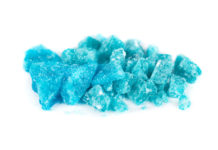OxyContin. At its peak, more than 20 new cases of HIV were being diagnosed a week.
Dubbed “the silent epidemic” by former U.S. Assistant Secretary for Health Dr. Howard Koh, the rising number of Hepatitis C cases in Indiana were spurred by the lack of federal support to combat the prevalence of intravenous opioid drug use.
Vice President Mike Pence, who served as Indiana’s governor from 2013 until 2017, called it one of the deadliest drug epidemics in U.S. history. He agreed to partially lift the state’s ban on needle exchange programs in July 2016. The Harm Reduction Coalition had been working to lift the ban on federal funding and recommended further funding be put towards drug treatment and Hepatitis C prevention.
And last July, the Comprehensive Addiction and Recovery Act of 2016 was signed by former President Barack Obama, which allowed major funding for access to naloxone and rehabilitation programs, improved prescription drug monitoring programs, and provided treatment for inmates suffering from addiction.
Senator Rob Portman called the signing of the Comprehensive Addiction and Recovery Act of 2016 a “historic moment” that validated the necessity for long-term addiction recovery.
Earlier this month, Indiana Gov. Eric Holcomb laid out his legislative agenda, which included limiting prescriptions and refills of opioids to seven days, and giving power to local authorities to establish their own needle exchange programs throughout the state. Previously, only the state’s health department had discretion over the establishment of needle exchange programs in Indiana.
“Too many Hoosiers are caught in the strangling grip of drugs and that illness,” Gov. Holcomb said in his State of the State address earlier this month. The challenge ahead for Indiana is “to ensure that that every Hoosier has the opportunity to live up to their potential,” he said.
















